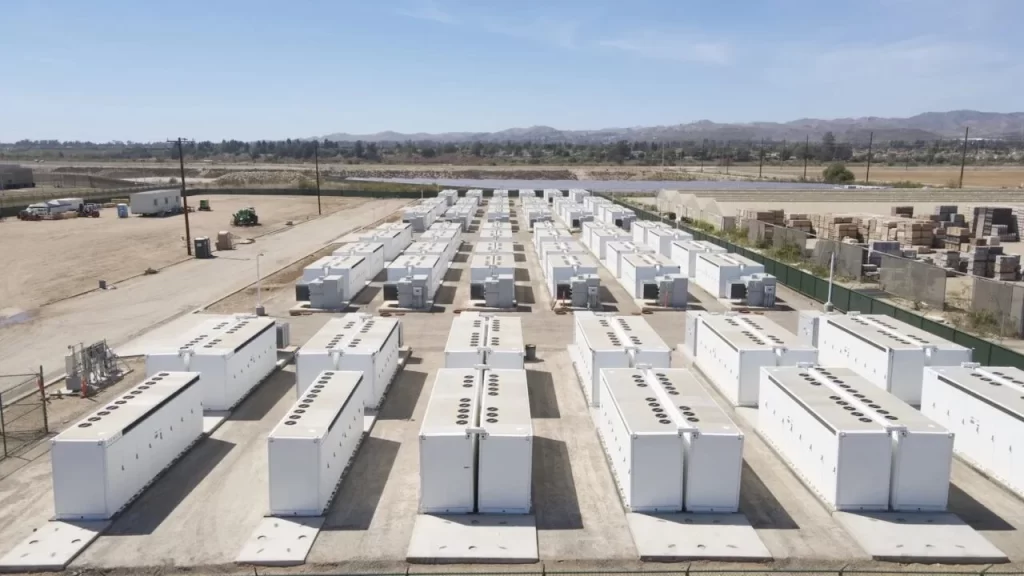
As the Battery StorageTech Bankability Ratings Report launches, providing insights and risk analysis on the leading global battery energy storage systems (BESS) suppliers, PV Tech Research market analyst Charlotte Gisbourne offers an exclusive preview.
While the battery energy storage systems (BESS) market has seen incredible growth in recent years, it remains a challenge to fully understand the companies behind the production, assembly, and shipment of BESS solutions, particularly for large utility-scale deployment.
With the BESS segment likely to go through various peaks and troughs before the market matures, increased scrutiny and due diligence are paramount when deciding on suppliers to engage with, and when evaluating risk associated with supply chains.
Following the success of the PV ModuleTech Bankability Ratings report – released by our market research team in 2019 for solar module buyers – we adapted the core methodology of this report to form a new dedicated quarterly report to cover the leading energy storage system (ESS) manufacturers and solutions suppliers in the sector.
The new report – the Battery StorageTech Bankability Ratings report – is available now.
This article provides an outline of the key features of the new report, and the methodology applied, alongside a number of graphics where the Top 15 companies are analysed as a single sector entity.
This Top 15 sample group includes companies active across battery cell production, module assembly and integrated solutions shipments. While not all companies make upstream components (or even assemble the modules themselves), it is a pre-requisite for inclusion in the new report that companies ship own-branded ESS solutions.
Top 15 ESS suppliers: a consolidated analysis
The following figures show some of the features and graphical output from the new report. In this article, the discussion is specific to the consolidated performance of the Top 15: in the report itself, the same level of detail is presented at the company level.

Within the Top 15 grouping, just over half make the battery cells themselves, with the pure-play systems integrators tending to procure the cells from various battery cell manufacturing plants in China, owned and operated by the likes of CATL, BYD, or EVE Energy.
While the majority of battery cell capacity is heavily weighted towards production for electric vehicles (EVs), ESS production—as a share of total battery cell capacity—has doubled since 2020, making the ESS segment a faster-growing opportunity for most manufacturers.

The shipment landscape for the Top 15 ESS suppliers is dominated by China. Again, overlapping with entire sector deployment activity in recent years, the US and Europe (where the UK retains a key first-mover advantage) are the other main end markets.

Bankability Scores (or Ratings) are comprised of two key parts: the Financial Score and the Manufacturing Score.
First, let’s look at the financial analysis employed.
Financial data and accounting ratios are collected at the entity (or company ‘group’) level, rather than purely at the ESS business unit (BU) level, if indeed ESS is a stand-alone BU at all. Most related BU’s are at best a mix of EV and ESS, with EV accounting for the lion’s share of revenues and profitability today.
While any consolidated financial exercise (as done here for the Top 15) is useful when looking at a sector as a whole, it can mask some of the performance outliers in the group itself.
Within the Top 15 ESS suppliers, a strong variation is seen across the different companies in the group. In particular, this comes to light when factoring in liquidity and debt to the picture. As an aside, it is common knowledge that margins (gross/operating) – or related EBIT/EBITDA numbers – are important, but they are simply part of a bigger picture when financial health and sustainable operations are being reviewed from an ongoing concern basis.

Back in 2019, when our research team created the PV ModuleTech Bankability Ratings report for solar modules, the underlying financial methodology was based on the Altman-Z method; Altman, E. (1968), Journal of Finance, 23.
The Altman-Z method is well-known and – despite being more than 50 years old – is one of the best statistical models to assess the health of listed companies.
While we use the Altman-Z analysis largely in its original form, some changes are introduced; in particular, when factoring in Price:Sales ratios (especially during periods of inflated company valuation or share price).
The Altman-Z method is an excellent tool when looking at profitability, cash-flow and debt trends on the same page (graphic over time, quarter-end or year-end). When looking at Figure 4 above (the consolidated financial analysis of the Top 15 ESS suppliers), there are two key takeaways from this year-end Altman ‘stack’.
First, the key liquidity, leverage and profitability ratios have been consistently net-positive in recent years.
Second – and potentially of more interest – is the scale of the valuation contribution. This likely suggests a sector that has been heavily overvalued until now. While having a somewhat inflated market capitalisation can be useful when investing in capex needed for capacity expansions, it can often lure companies (and investors) into a false sense of security. Ultimately, time will tell if current valuation levels are rational or not.
Financial Scores at the company level are primarily derived from the modified Altman-Z score but have additional contributions/weightings from the level of retained-earnings (working capital) and the share of group revenues derived from non-ESS solutions sales.
This allows important de-risking of some larger entities (such as BYD or Samsung SDI). These companies can shield short-term underperformance coming from ESS operations, and they should be less impacted during any specific ESS cyclical downturn phase.
Looking now at the Manufacturing Scores: here, there are contributions from in-house Production (for battery cells), Assembly (for ESS modules) and Shipments (integrated solutions).
This allows us to factor in the benefits of having in-house ‘vertical integration’, with companies making their own battery cells seeing a boost to overall Bankability Scores.
This has further benefits to ESS buyers when looking at traceability and supply chains. By default, companies in ‘control’ of upstream in-house production should have the best visibility on supply chain operations and the various bill-of-materials used in the factories across the value chain.

As shown in Figure 5 above, the final Bankability Scores combine the individual Financial and Manufacturing Scores, with the highest-scoring companies typically located in the AAA-Rating band, and the lowest falling into the C-Rating band.
To illustrate this hierarchical approach clearly, a pyramid-type stack is used. This is possible because most of the companies fall into the lower grades (B or C), with many of the companies with minimal market share being in the CC or C bands.
By default, the companies at the top of the Bankability Pyramid (Figure 6 below) are the ones with strong contributions from in-house production and ESS solutions shipments, while having stable or over-performing (relative to industry peers) financial health metrics.

Currently, Tesla is the leading company in the first release of the Battery StorageTech Bankability Ratings report, and is the only supplier to feature in the top AAA-Rating band.
While Tesla relies upon some third-party battery cell supply, the quarterly deployment levels of ESS solutions are currently trending at record highs (almost 10 GWh). Furthermore, Tesla’s Financial Scores are at the upper end of all the companies analyzed in the first report, although ESS operations still represent a minor part of the total group turnover.
Over the next 12 months, it is expected that significant changes will unfold in the Bankability Pyramid; in particular, arising from the number of new Chinese companies that have entered the sector in the past couple of years. However, it is unclear how the fortunes of these producers will evolve since many of them are largely ‘China-centric’ in their positioning and lack any manufacturing capacity outside mainland China.
Ultimately, the sector could become segmented in geographic supply coverage, driven by US/China trade policy or the realignment of EV/ESS upstream manufacturing to satisfy the geographic location-of-manufacturing demands from the EV industry globally.























